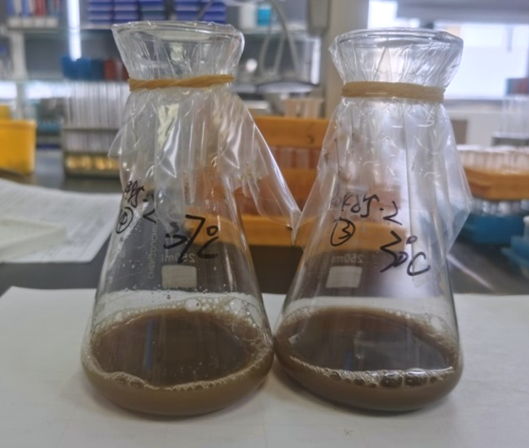Heme, an iron(II)-containing porphyrin compound, is essential in higher organisms for oxygen transport, iron homeostasis, electron transfer, and energy production. Owing to its efficient iron supplementation, antioxidant properties, and remarkable biocatalytic activity, heme plays a critical role across several key sectors:
Pharmaceutical Applications:
-
Highly effective iron supplement with high absorption rate and minimal side effects, used in treatments for iron-deficiency anemia.
-
Precursor for antitumor drugs such as hematoporphyrin derivatives
-
Exhibits antioxidant and immunomodulatory functions, aiding in the management of chronic diseases.
Food Industry:
-
Used in plant-based meat alternatives to enhance color, flavor, and texture through precise binding with proteins, while reducing potential carcinogenic risks.
-
Serves as a nutritional fortifier to increase iron content in foods.
Agricultural Uses:
-
Functions as a plant growth promoter by improving photosynthesis and stress resistance, thereby increasing crop yield and quality.
-
Certain heme-based formulations can act as biopesticides, reducing dependence on synthetic chemicals.
Chemical and Material Sciences:
-
Serves as a biocatalytic platform for high-selectivity asymmetric synthesis (e.g., pharmaceuticals and specialty materials) and the construction of enzymatically active functional materials, advancing green synthesis technologies.
Challenges in Conventional Heme Production:
Traditional chemical synthesis and natural extraction methods suffer from low purity, significant byproduct generation, and environmental pollution. Moreover, extraction of high-value derivatives is hindered by their naturally low abundance, resulting in high costs and limited supply.
Limitations in Biosynthesis:
Current microbial systems typically yield less than 300 mg/L of heme, with derivative titers (e.g., bilirubin) often below 20 mg/L. Production remains costly due to reliance on expensive intermediates such as glutamate, glycine, and succinate. Inefficient metabolic flux distribution—often caused by unbalanced expression of key genes—further limits synthesis efficiency, creating metabolic "bottlenecks."
There is a clear need for innovative biosynthetic strategies that enhance pathway efficiency, optimize enzyme complexes, and rewire host metabolism to enable scalable and sustainable heme production.
Recent Advances: Multi-Enzyme Complex Technology
Although metabolic engineering has improved microbial heme synthesis, challenges such as low catalytic efficiency, competition for precursor metabolites, and poor heterologous enzyme expression persist.
A recent study published in the Journal of Agricultural and Food Chemistry by a collaborative team from Jilin University and Jiangnan University introduced a Customized Iterative Module-based Metabolic Flux Analysis (CIM-MFA) strategy[1]. By modularizing the heme synthesis pathway into three optimized segments, the team developed an engineered Corynebacterium glutamicum strain, HEME3-ΔhrtBA, which exhibited a 90.75-fold increase in heme production compared to the wild type. This strain achieved gram-per-liter scale production of key hemoglobins and myoglobins at shake-flask level—setting a new benchmark in microbial synthesis.
Synbio TechnologiesIntegrated Solution
While engineering of C. glutamicum represents significant progress, transitioning to industrial-scale production requires further innovation. Synbio Technologies synergistically combines multi-enzyme complex design, AI-powered codon optimization (via the NG Codon 2.0 platform), and host metabolic engineering to dramatically enhance heme yields.
-
Multi-Enzyme Complex Design: Fusion enzyme complexes were constructed to streamline the heme C4 synthesis pathway, significantly improving production efficiency.
-
AI-Powered Codon Optimization: NG Codon 2.0 enables high-level soluble expression of large and complex enzyme assemblies in E.coli, overcoming historical limitations in expressing high-molecular-weight protein complexes.

We offers advanced synthetic biology platforms, including customized multi-enzyme complex assembly and codon optimization services, providing core driving force for high-efficiency biosynthesis. Our flexible partnership models support end-to-end R&D and production needs for a wide range of high-value natural products, fine chemicals, and bio-based materials.
Outlook
The move away from natural extraction and chemical synthesis—toward renewable sugar-based production using precision cell factories—marks not only a technological revolution but also a fundamental shift in global protein supply chains. Efficient, sustainable, and cost-effective heme production is poised to become a cornerstone of the trillion-dollar sustainable food market.
Reference
[1] Wang S, Yin Z,et al. Engineering Corynebacterium glutamicum with Effective Heme Supply for the Synthesis of High-Activity Hemoglobins and Myoglobins. J Agric Food Chem. 2025 Jun 18;73(24):15235-15244.
 DNA Synthesis
DNA Synthesis Vector Selection
Vector Selection Molecular Biology
Molecular Biology Oligo Synthesis
Oligo Synthesis RNA Synthesis
RNA Synthesis Variant Libraries
Variant Libraries Genome KO Library
Genome KO Library Oligo Pools
Oligo Pools Virus Packaging
Virus Packaging Gene Editing
Gene Editing Protein Expression
Protein Expression Antibody Services
Antibody Services Peptide Services
Peptide Services DNA Data Storage
DNA Data Storage Standard Oligo
Standard Oligo Standard Genome KO Libraries
Standard Genome KO Libraries Standard Genome Editing Plasmid
Standard Genome Editing Plasmid ProXpress
ProXpress Protein Products
Protein Products
























